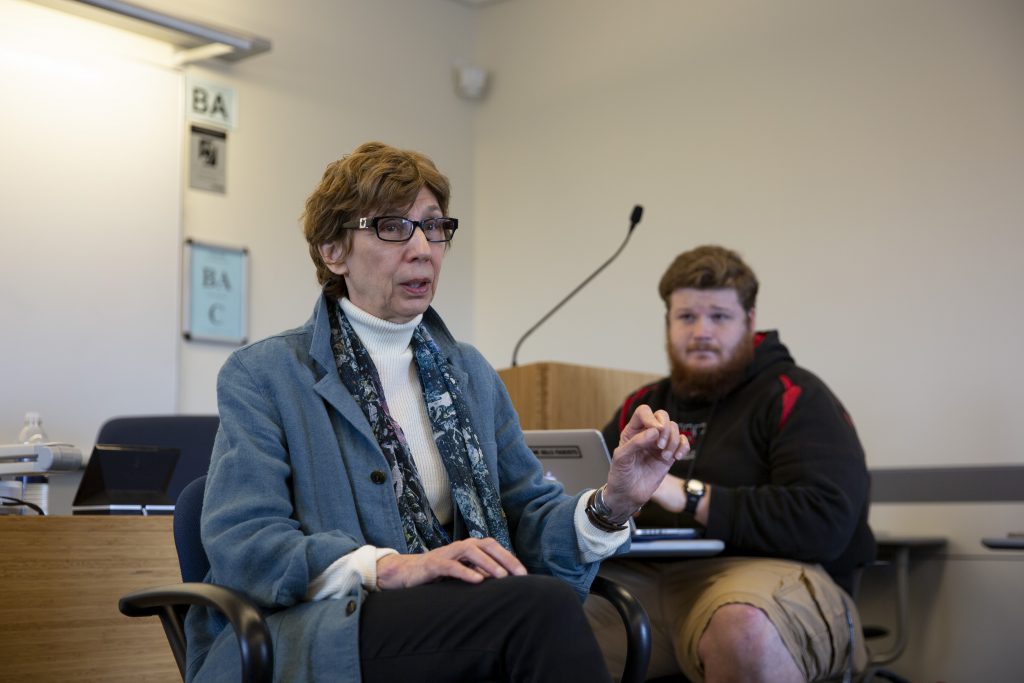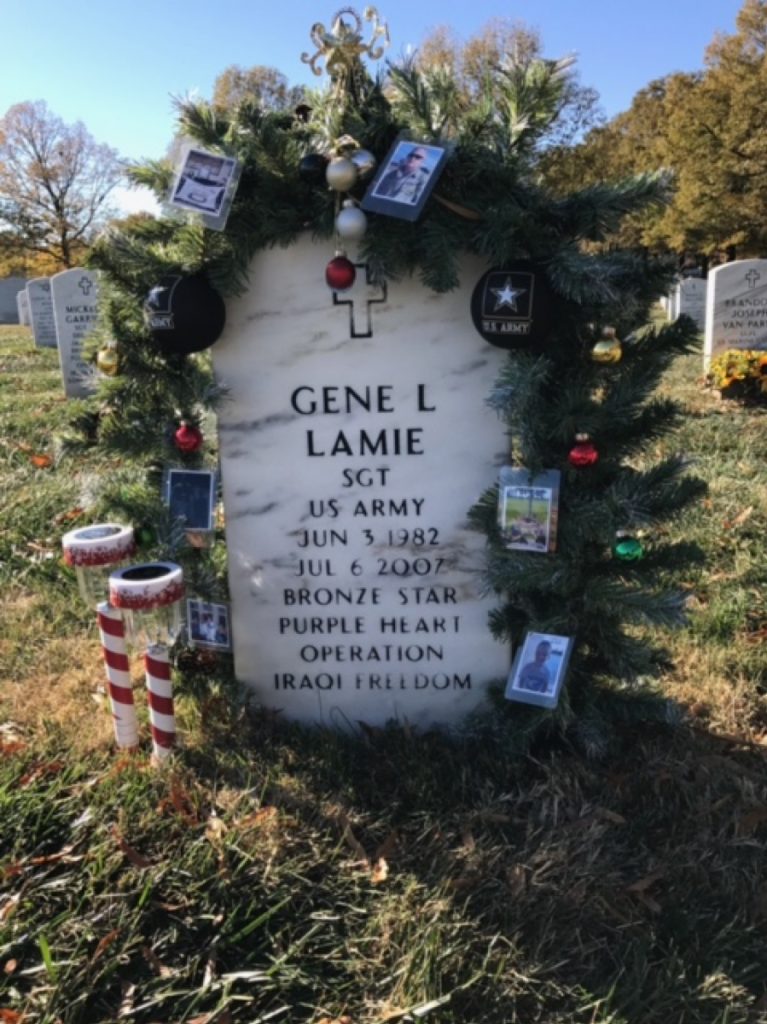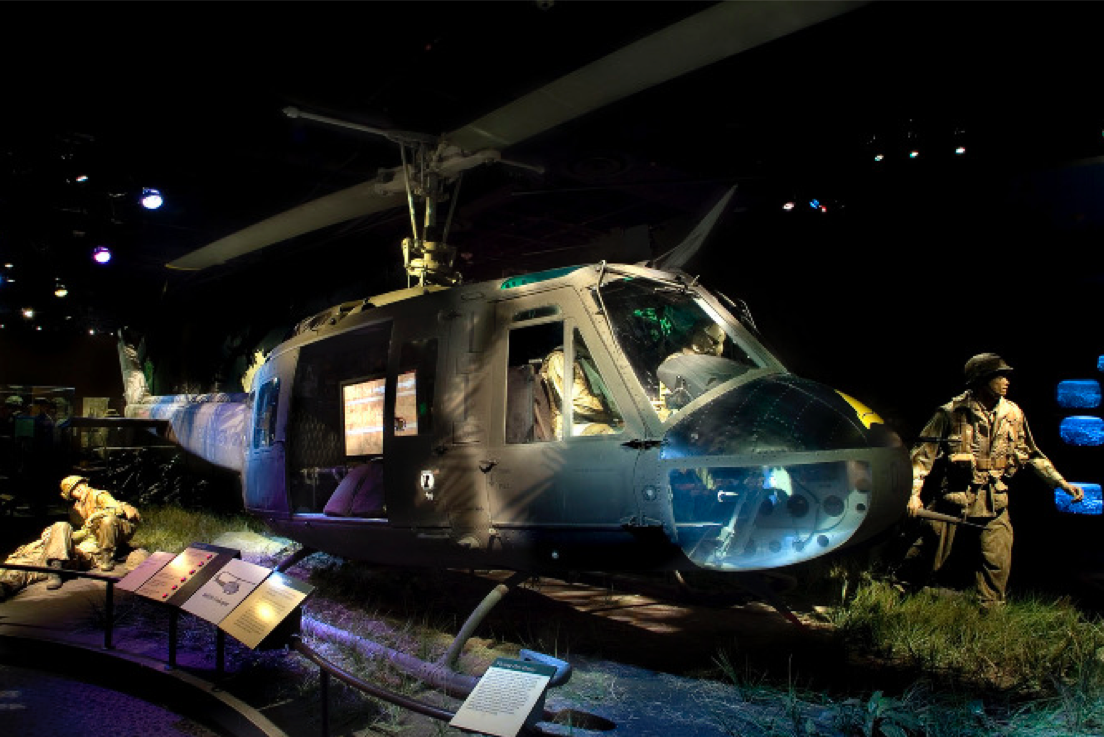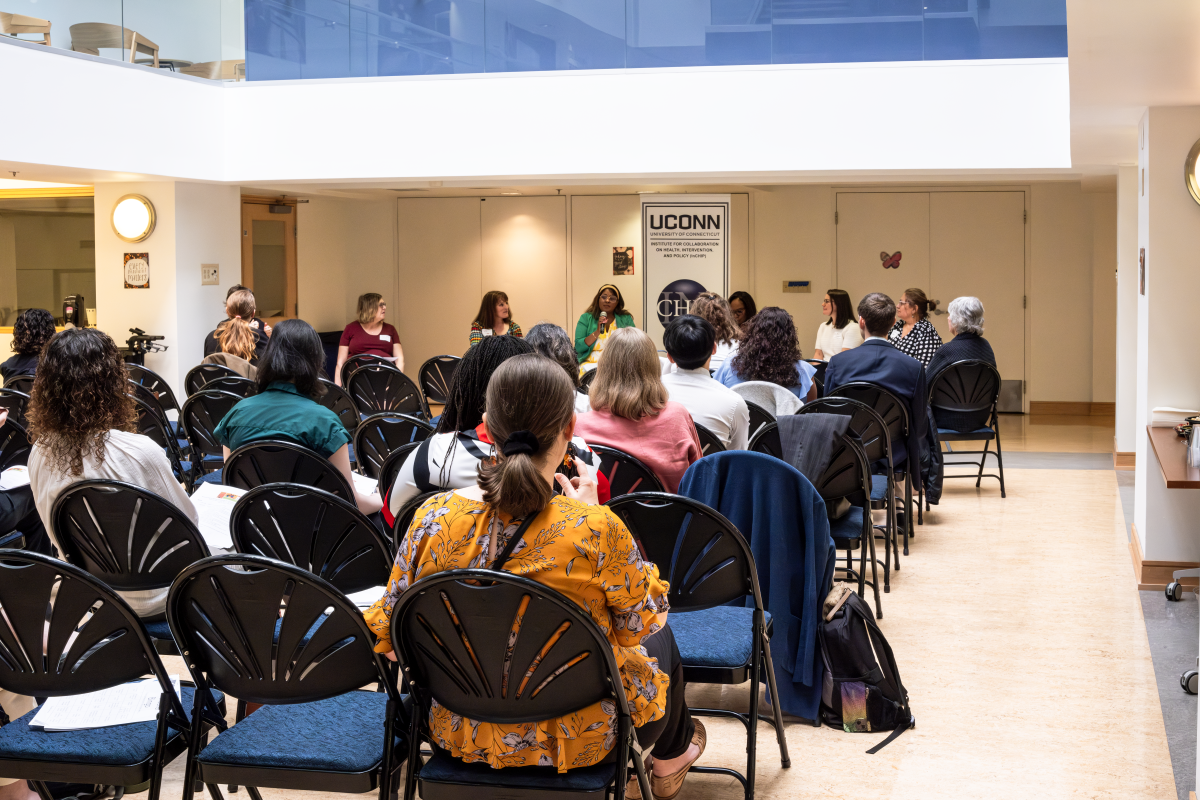
A bicycle obscured by a gallery-filling helicopter. A prohibited photo of a smiling soldier, taped to his grave. A letter written by a stranger to a fallen gold-star Army captain. A quarter perched atop a headstone.
The things we collect, display, and celebrate to memorialize those who have fallen in wars take many forms. And the forms they take speak volumes about the way we memorialize the war experience, says Christine Sylvester, professor of political science in the College of Liberal Arts and Sciences.
In her new book, Curating and Re-Curating the American Wars in Vietnam and Iraq (Oxford University Press 2019), Sylvester asks who can be considered bona fide authorities on war – soldiers, specialist museum curators, academics, government officials, or possibly everyday civilians? – and whose memories are curated at premier American war displays and memorials?
She insists that “different, situated types of memory” appearing in small displays – such as personal photos, letters, house keys, cans of beer, and other daily items – extend and round out “official” curations that showcase war as a realm only of national valor.
“There is no settled truth on any war,” she says. “We tend to hand over authority about wars to ‘experts,’ so we don’t always see ordinary people’s curation of their war experience, and their memory.”
The book considers specifically the significance of objects collected and displayed at exhibits pertaining to the American wars in Vietnam and Iraq.
As an international relations expert, Sylvester is particularly interested in these wars, she says, because they are contemporary and did not end in American victories. She wondered: How do people remember and curate elements of these failed wars?
To understand different perspectives on these wars, Sylvester investigated four sites of war memory: the Smithsonian National Museum of American History, the Vietnam Veterans Memorial, Arlington National Cemetery, and eight selected novels and memoirs from the two wars.
We tend to hand over authority about wars to ‘experts,’ so we don’t always see ordinary people’s curation of their war experience. — Christine Sylvester
Her work shows that individual curations can expose a war’s undersides, especially at sites curated by officials. A telling example is at Arlington National Cemetery’s Section 60, which is devoted to the graves of American soldiers who died in Afghanistan and Iraq.
Technically, placing mementos on and around graves is prohibited by Cemetery officials, on the grounds that an austere environment is appropriate when honoring fallen heroes, says Sylvester. But since those in Section 60 passed so recently, many living family members visit regularly, and they decorate headstones and graves with objects of their memories.
In July 2013, Cemetery officials cracked down, confiscating all mementos left on view in that section – including coins placed on the stones, a common practice that can signify, with a quarter, that a visitor was with the deceased when they died.
“Photos, garlands, tokens, pieces of clothing – it was all taken and never given back to the families,” notes Sylvester.

So many family members rebelled, putting up Christmas trees, balloons, and photos of their lost loved ones on the gravestones. In the end, the Cemetery management bent, and changed its policies on the insistence of these civilians.
“The military dominates the Arlington landscape, clutches the persons lying there, and sets a statist atmosphere and standard of behavior,” Sylvester writes in her book. “The bold message these re-curators send is that the state can claim those bodies, but it cannot claim their lives and erase the civilians they were while also being military.”
In the National Museum of American History, Sylvester also notes that the exhibit on the Vietnam War consists almost exclusively and most dramatically of a life-size diorama of the U.S. military’s Bell UH-1 Iroquois “Huey” helicopter, accompanied by three American soldiers. According to Sylvester, it overshadows all other exhibits in the room, including photos of people in Vietnam suffering from napalm attacks, and protests in the United States.
On display under the large tail of the Huey is a North Vietnamese bicycle, a form of transportation said to have won the Vietnam War by ferrying supplies along the Ho Chi Minh Trail for hundreds of miles, pushed by Vietnamese soldiers and civilians alike. That it sits “empty of purpose and of operator” is in stark contrast to the huge weapon of war that overshadows it, Sylvester notes in her book.
“Is [the Huey helicopter] supposed to make you forget that we lost the war?” she asks. “Visitors pass by the bicycle without seeing it, unless they try to see it. The exhibit suggests a major triumph of the U.S. that doesn’t exist.”
Sylvester teaches extensively on this topic to graduate students, and also in a popular upper-division undergraduate course, called Gender and War, in which the students explore the way wars operate differentially with regard to women’s, men’s, and LGBTQ+ roles. They also learn details about the many wars being waged concurrently today across the globe.
Over the years, she has had both Vietnam and Iraq war veterans in her classes, and they are especially interested in what she calls the American tendency to militarize war memories.
We have not historically included stories of real people. We need to change that. — Christine Sylvester
Her students of today may be angry, she says, that they don’t study more in high school and other classes about the many American wars of the post-World War II era.
“We’re in a period of forever wars,” says Sylvester. “We don’t know much about the war in Afghanistan because it’s off the news, which is similar to media coverage of the war in Iraq.”
Sylvester says she hopes the book will help people interested in contemporary American wars appreciate that many ordinary people experience war, and their memories are crucial for understanding what war is about.
“In my field of international relations, we tend to abstract away people,” she says. “The higher we go above the dirty dishes, the smarter we are. We have not historically included stories of real people. We need to change that.”



